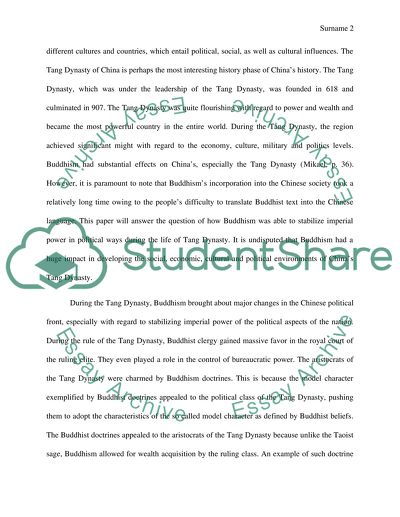Cite this document
(“Buddhism in Tang Dynasty Term Paper Example | Topics and Well Written Essays - 1500 words”, n.d.)
Buddhism in Tang Dynasty Term Paper Example | Topics and Well Written Essays - 1500 words. Retrieved from https://studentshare.org/religion-and-theology/1444961-buddhism-in-tang-dynasty
Buddhism in Tang Dynasty Term Paper Example | Topics and Well Written Essays - 1500 words. Retrieved from https://studentshare.org/religion-and-theology/1444961-buddhism-in-tang-dynasty
(Buddhism in Tang Dynasty Term Paper Example | Topics and Well Written Essays - 1500 Words)
Buddhism in Tang Dynasty Term Paper Example | Topics and Well Written Essays - 1500 Words. https://studentshare.org/religion-and-theology/1444961-buddhism-in-tang-dynasty.
Buddhism in Tang Dynasty Term Paper Example | Topics and Well Written Essays - 1500 Words. https://studentshare.org/religion-and-theology/1444961-buddhism-in-tang-dynasty.
“Buddhism in Tang Dynasty Term Paper Example | Topics and Well Written Essays - 1500 Words”, n.d. https://studentshare.org/religion-and-theology/1444961-buddhism-in-tang-dynasty.


